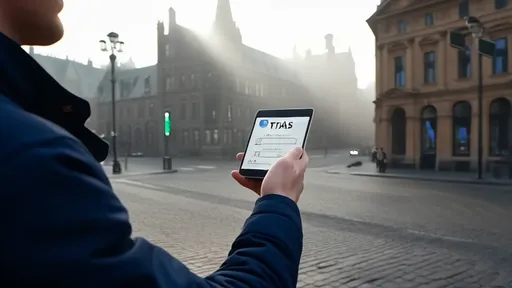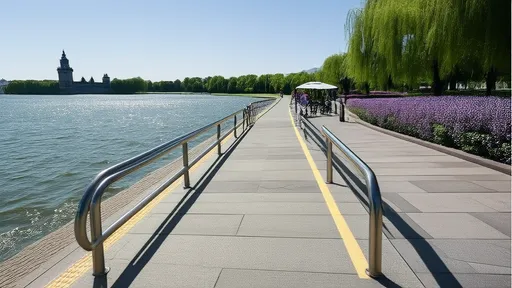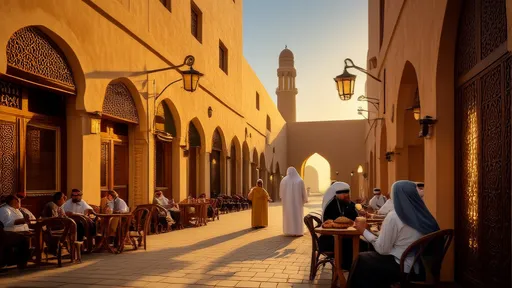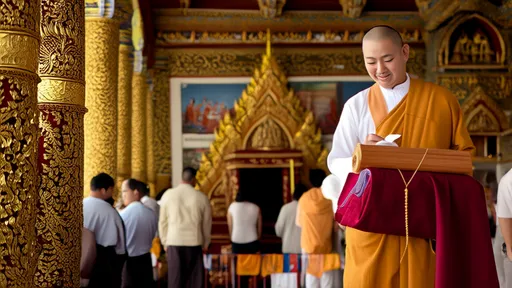As the holy month of Ramadan approaches, cities across the Middle East prepare for a period of spiritual reflection, communal prayers, and fasting from dawn to dusk. For non-Muslim residents and visitors, navigating daily life during this sacred time requires cultural sensitivity, particularly when it comes to dining in public spaces. The concept of designated non-Muslim dining areas has become an increasingly important topic, blending respect for religious traditions with the practical needs of a diverse population.
In many Middle Eastern countries, the rhythm of life shifts dramatically during Ramadan. Restaurants that typically buzz with lunchtime crowds often remain shuttered until sunset, when the fast is broken with the iftar meal. For those not observing the fast, finding a place to eat during daylight hours can be challenging. This has led to the establishment of discreet dining zones in hotels, shopping malls, and certain restaurants that cater specifically to non-Muslims during fasting hours.
The cultural significance of these arrangements cannot be overstated. Ramadan represents one of the most important pillars of Islam, and the act of fasting carries deep spiritual meaning. The creation of separate dining spaces allows Muslim communities to maintain their religious observance without completely disrupting the normal flow of business and tourism. At the same time, it provides visitors and non-Muslim residents with appropriate places to eat without causing offense or breaking local customs.
Major international hotels have pioneered this approach, offering partitioned dining areas where guests can enjoy meals during daylight hours. These spaces are typically located away from main thoroughfares and are designed to be as unobtrusive as possible. Window coverings and strategic seating arrangements help maintain the spirit of Ramadan while accommodating those with different dietary needs. The service in these areas is often more subdued, with staff speaking in hushed tones and avoiding any overt display of food in public spaces.
Shopping malls across the region have adopted similar solutions, creating food court sections that remain operational throughout the day. These areas are usually cordoned off with subtle signage indicating they are designated for non-fasting individuals. The management of these spaces requires careful coordination - while ensuring access for those who need it, there's also an emphasis on maintaining decorum and respect for those observing the fast.
The etiquette surrounding these dining areas involves more than just physical separation. Many establishments request that patrons avoid eating or drinking in public spaces when moving to and from these designated zones. Discretion is key, with visitors encouraged to be mindful of their surroundings and refrain from behaviors that might make fasting individuals uncomfortable. This includes avoiding loud conversations about food or making displays of eating near those who are abstaining.
From a business perspective, maintaining these separate dining spaces presents both challenges and opportunities. Restaurant operators must carefully balance staffing needs, as many Muslim employees prefer reduced working hours during Ramadan. Menu offerings often adapt as well, with some establishments focusing on lighter fare or meals that can be quickly prepared by smaller kitchen teams. The financial viability of keeping certain sections open during typically slow daytime hours requires careful calculation.
Tourism authorities have recognized the importance of clear communication about dining options during Ramadan. Many now provide detailed information through hotel concierges, tourism websites, and mobile applications. This helps visitors plan their days accordingly and prevents uncomfortable situations where travelers might unknowingly breach local customs. Some cities even produce printed guides explaining Ramadan protocols and listing available dining options for non-Muslims.
The evolution of these practices reflects the changing demographics of Gulf cities in particular, where expatriate populations sometimes outnumber local citizens. In cosmopolitan centers like Dubai, Doha, and Manama, the demand for daytime dining options has grown alongside increasing numbers of business travelers and tourists who may not be familiar with Ramadan traditions. The solution has been to develop systems that respect Islamic practices while accommodating global visitors.
Interestingly, the concept of separate dining areas has sparked discussions about cultural integration and religious coexistence. Some see these arrangements as practical solutions that allow different communities to coexist harmoniously during a sacred period. Others view them as temporary measures that highlight the ongoing process of cultural adaptation in rapidly developing societies. What remains constant is the underlying principle of mutual respect that makes such compromises possible.
For non-Muslims living in or visiting the Middle East during Ramadan, understanding these dining protocols represents an important aspect of cultural immersion. Many long-term expatriates choose to adjust their own routines out of solidarity, opting to eat only in private or during evening hours. Newcomers are often touched by the spirit of generosity that characterizes Ramadan, with many Muslim hosts going out of their way to ensure their non-fasting colleagues and friends feel comfortable and included.
As sunset approaches each day, the dynamic shifts dramatically. The iftar meal transforms these same dining spaces into vibrant hubs of activity, with Muslims and non-Muslims alike sharing in the breaking of the fast. This daily transition from quiet discretion to joyful celebration encapsulates the unique rhythm of Ramadan - a time of personal sacrifice and communal bonding that ultimately brings people together across cultural divides.
The system of designated non-Muslim dining areas during Ramadan represents more than just a practical solution to logistical challenges. It embodies the delicate balance between maintaining religious traditions and accommodating diversity in modern Middle Eastern societies. As these communities continue to evolve, so too will the approaches to preserving cultural and spiritual values while engaging with an increasingly interconnected world.

By /Jul 25, 2025

By /Jul 25, 2025

By /Jul 25, 2025

By /Jul 25, 2025

By /Jul 25, 2025

By /Jul 25, 2025

By /Jul 25, 2025

By /Jul 25, 2025

By /Jul 25, 2025

By /Jul 25, 2025

By /Jul 25, 2025

By /Jul 25, 2025

By /Jul 25, 2025

By /Jul 25, 2025

By /Jul 25, 2025

By /Jul 25, 2025

By /Jul 25, 2025

By /Jul 25, 2025

By /Jul 25, 2025

By /Jul 25, 2025